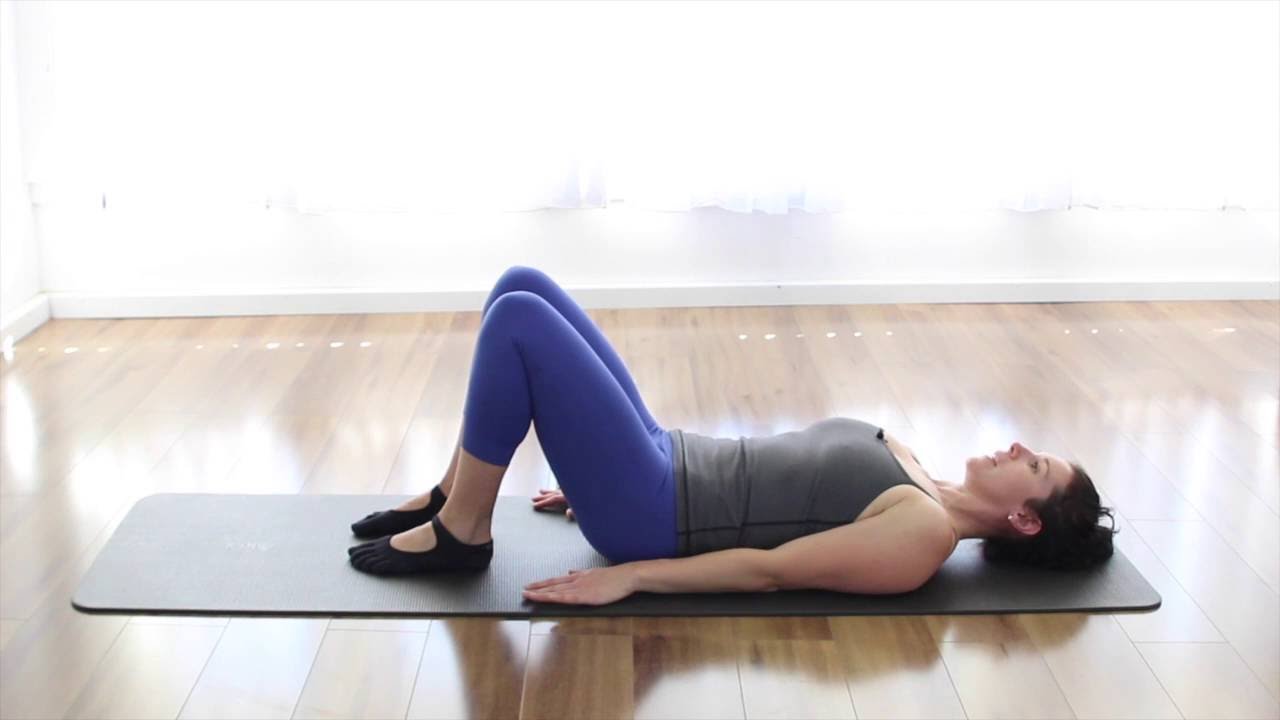Kegel Exercises - The Benefits They Provide For Your Pelvic Floor
Kegel exercises are great for strengthening the muscles of the pelvic floor, which help keep your uterus, bladder, small intestine, and rectum in place. When you sit on the toilet and suddenly have to halt the flow of urine, the muscles in your pelvic floor kick in. If you want to keep urine from leaking, stop gas or poop from coming out on its own, and even improve your orgasm, you should work on strengthening these muscles.
Author:Suleman ShahReviewer:Han JuSep 20, 20220 Shares188 Views

Kegel exercisesare great for strengthening the muscles of the pelvic floor, which help keep your uterus, bladder, small intestine, and rectum in place.
When you sit on the toilet and suddenly have to halt the flow of urine, the muscles in your pelvic floor kick in.
If you want to keep urine from leaking, stop gas or poop from coming out on its own, and even improve your orgasm, you should work on strengthening these muscles.
Kegel exercises, or training for the pelvic floor muscles, can be done whenever you have a few minutes to spare.
Learn the benefits of Kegel exercises and then follow these steps to strengthen your pelvic floor muscles by tensing and relaxing them.
A Brief History Of Kegels
Urinary stress incontinence, prolapse (sagging) of the bladder, uterus, or vagina, and other pelvic healthproblems can all be treated with kegel exercises, which were created in the 1940s by an American doctor named Arnold Kegel as a non-surgical alternative to surgery.
For this reason, many medical professionals and doctors recommend kegel exercises to healthy women, especially those in their middle years and beyond, to help prevent these problems.

Kegels Exercises for Women - Complete BEGINNERS Guide
What Are Kegel Exercises?
If you want stronger pelvic floor muscles, try doing Kegel exercises (also called pelvic floor exercises). By doing Kegel exercises, you can strengthen the muscles in your pelvic floor. This may help you stop leaking urine, feces, and gas, and it may even help you get a better erection.
Keeping these muscles "fit" helps prevent the uterus, bladder, and bowel from descending into the vagina. Pelvic organ prolapse describes this medical disorder.
The Importance Of Kegel Exercises
Your pelvic floor muscles can get weaker for a number of reasons, like being pregnant, giving birth, having surgery, getting older, straining for a long time because you have constipation, cough a lot, or being overweight.
Kegel exercises could be beneficial to you if you have any of the following conditions:
- Leaking stool (fecal incontinence)
- Have a strong, sudden urge to urinate just before losing a large amount of urine.
- Sneeze, laugh, or cough enough to let a few drips of urine fall on the ground.
You can also try to ease some of the symptoms by doing kegel exercises while you're pregnant or after you've had a baby.
Kegel exercises are of limited use to women who experience significant pee loss if they sneeze, cough, or laugh. Also, Kegel exercises don't help women whose overactive bladders cause them to leak small amounts of urine when they least expect it.
How To Do Kegel Exercises
To get started:
- Repeat three times a day:Aim for at least three sets per day, each consisting of 10 to 15 repetitions.
- Maintain your focus:Just concentrate on toning your pelvic floor muscles for the maximum effects. Make sure you don't tense up your abs, thighs, or posterior. Don't forget to take deep breaths. Breathe normally while you perform the exercises.
- Perfect your technique:To perform Kegels, close your eyes and picture yourself sitting on a marble. Then, contract your pelvic muscles as if you were trying to lift the marble off the floor. Give it a whirl for three seconds and then take it easy for three.
- Find the right muscles:Stopping urine midway can help you locate the muscles that make up your pelvic floor. Once you know which muscles to target in your pelvic floor, you can do the exercises while sitting, standing, or lying down.
Do not make Kegel exercises the primary method by which you initiate and halt the flow of pee. Urinary tract infections are more likely to happen if you do kegel exercises while trying to empty your bladder. This is because the exercises can slow down the process.
Finding The Pelvic Floor Muscles In Women
Finding the proper muscle group to target while beginning Kegel exercises might be challenging. A clean finger can be used to feel for them by inserting it into the vagina and then contracting the vaginal muscles surrounding it.
Muscles can also be localized by attempting to pause urine flow. The muscles of your pelvic floor are used for this purpose. Learn to anticipate the sensation of their contraction and release.

Kegel Exercises for Men - Beginners Pelvic Floor Strengthening Guide
In any case, you should only utilize this technique for educational purposes. It's not a good idea to conduct kegel exercises frequently or to start and stop urinating frequently if you have a full bladder. Having a bladder that isn't completely empty can increase your chances of getting a UTI.
If you aren't confident that you've located the appropriate muscles, consult your gynecologist. A vaginal cone is a possible recommendation. A vaginal cone is put in the vagina and held there by the muscles on the pelvic floor.
If you're having trouble locating and isolating your pelvic floor muscles, biofeedback training may be able to help. For this treatment, a small probe is inserted vaginally or sticky electrodes are put on the outside.
You'll be asked to give the kegel exercise a shot. The length of time you were able to hold a muscle contraction and whether or not the intended muscles were targeted will be displayed on a screen.
Finding The Pelvic Floor Muscles In Men
Similar confusion exists when males try to pinpoint the precise set of pelvic floor muscles. Men can find their erectors by putting a finger in the rectum and squeezing it without also tightening their stomach, buttocks, or thigh muscles.
Similarly, tensing the abdominal muscles that prevent passing gas can be useful. It may help to practice holding your urine in if you're still experiencing problems. This method is just as effective for locating the pelvic floor muscles in males as it is in women, but it shouldn't become routine.
Men can also benefit from biofeedback in termsof identifying their pelvic floor muscles. Schedule a visit to the clinic or hospital if you can't seem to track them down on your own.
The Advantages Of Kegel Exercises
Always make sure you're completely dry before attempting Kegel exercises. In the beginning, it's best to practice your workouts in a secluded, peaceful setting, either sitting or lying down. Once you get the hang of it, you can perform it virtually anywhere.
When beginning kegel exercises, it is recommended that you contract your pelvic floor muscles for three counts, then release them for three counts. If you want to do 10 reps, keep going.
Try to build up your muscular tension until you can hold it for 10 seconds over the next few days. Your daily routine should consist of three sets of ten reps.
Don't give up if your efforts don't provide results right away. Urinary incontinence may improve after a few months of doing kegel exercises.
In addition, they each have their own unique effects. Muscle control and urinary incontinence can improve significantly for some people. Kegel exercises, however, have the potential to keep your issue from worsening.
Kegel Complications
Even though kegel exercises are risk-free, one must always use caution when performing them. Here is what you need to keep an eye out for:
- Exercise regularly:Strengthening your kegel muscles takes time and effort, just like any other form of exercise. You should maintain this regimen for at least 15 weeks, doing the exercises daily. If you want to change something in your usual routine, you should talk to your doctor first.
- Don’t overdo it:This may cause you to experience discomfort whenever you have to use the restroom.
- Don’t do kegels while you pee:The goal is to simulate the physical effort required to prevent urination without actually stopping. A urinary tract infection (UTI) is always a possibility.
Not everyone can benefit from using kegels. These exercises may cause more harm than benefit if your pelvic floor muscles are chronically stiff. Your fatigued muscles won't respond if you force them to contract. If you want to know if this applies to you, talk to your doctor.
Mistakes To Avoid During Kegel Exercises
Not only do kegels require you to squeeze your pelvic floor muscles, but you also need to let them relax between sets for the condition to get better.
Consider it in this way. Strengthening those muscles with kegel exercises makes it possible to do things like clamp down on command to avoid injuries.
On the other hand, if you constantly clench your teeth, your muscles will be unable to tighten any farther in times of crisis. Another way to think of this is that it gets difficult to hold something if you always keep your hand in a fist.
By relaxing them during kegels, you can avoid engaging the wrong muscles, such as those in your stomach, buttocks, or legs. By doing so, you risk hindering the function of your pelvic muscles. Additionally, if you tense the muscles around your pelvic floor instead of your pelvic floor muscles, it might cause pressure on your bladder.
People Also Ask
What Is The Best Exercise For Kegels?
- Three times a day, repeat 10 times (morning, afternoon, and night).
- Tend to your muscles and take a three to five-second breather.
- Pull in your tummy and tighten your pelvic floor. Keep your breath and count to three, four, or five.
- Once you've made sure your bladder is empty, you can sit or lie down.
Do Kegel Exercises Make You Tighter?
Even though kegel exercises may have some small benefits, they can't achieve the same level of tightness and correction as vaginoplasty.
What Is Female Kegel Exercise?
Kegel exercises are exercises that strengthen the muscles that are found in the pelvic floor. You could also hear them referred to as exercises for the pelvic floor. They affect the muscles that support your uterus, bladder, small intestine, and rectum.
Can You Overdo Kegel Exercise?
Due to the fact that the pelvic floor is composed of skeletal muscles, it is susceptible to the same kinds of injuries that can affect other parts of your body, such as your biceps or hamstrings. As a result, it is entirely possible to perform an excessive number of kegels, just as it is possible to do so when lifting weights at the gym or running.
Conclusion
When it comes to building muscle strength, kegels are no different than any other exercise routine: it takes time. Although outcomes vary greatly from person to person, many people start to see a difference in their bladder strength (with fewer "accidents" and longer periods between trips to the bathroom) within three to six weeks of routinely practicing these exercises.
Kegel exercises are often the first line of defense, but if they don't help, further therapies like physiotherapy or surgery may be offered. In spite of this, most people would benefit greatly from doing kegels, and once you get the hang of it, you can easily incorporate them into your daily routine.
Jump to
A Brief History Of Kegels
What Are Kegel Exercises?
The Importance Of Kegel Exercises
How To Do Kegel Exercises
Finding The Pelvic Floor Muscles In Women
Finding The Pelvic Floor Muscles In Men
The Advantages Of Kegel Exercises
Kegel Complications
Mistakes To Avoid During Kegel Exercises
People Also Ask
Conclusion

Suleman Shah
Author
Suleman Shah is a researcher and freelance writer. As a researcher, he has worked with MNS University of Agriculture, Multan (Pakistan) and Texas A & M University (USA). He regularly writes science articles and blogs for science news website immersse.com and open access publishers OA Publishing London and Scientific Times. He loves to keep himself updated on scientific developments and convert these developments into everyday language to update the readers about the developments in the scientific era. His primary research focus is Plant sciences, and he contributed to this field by publishing his research in scientific journals and presenting his work at many Conferences.
Shah graduated from the University of Agriculture Faisalabad (Pakistan) and started his professional carrier with Jaffer Agro Services and later with the Agriculture Department of the Government of Pakistan. His research interest compelled and attracted him to proceed with his carrier in Plant sciences research. So, he started his Ph.D. in Soil Science at MNS University of Agriculture Multan (Pakistan). Later, he started working as a visiting scholar with Texas A&M University (USA).
Shah’s experience with big Open Excess publishers like Springers, Frontiers, MDPI, etc., testified to his belief in Open Access as a barrier-removing mechanism between researchers and the readers of their research. Shah believes that Open Access is revolutionizing the publication process and benefitting research in all fields.

Han Ju
Reviewer
Hello! I'm Han Ju, the heart behind World Wide Journals. My life is a unique tapestry woven from the threads of news, spirituality, and science, enriched by melodies from my guitar. Raised amidst tales of the ancient and the arcane, I developed a keen eye for the stories that truly matter. Through my work, I seek to bridge the seen with the unseen, marrying the rigor of science with the depth of spirituality.
Each article at World Wide Journals is a piece of this ongoing quest, blending analysis with personal reflection. Whether exploring quantum frontiers or strumming chords under the stars, my aim is to inspire and provoke thought, inviting you into a world where every discovery is a note in the grand symphony of existence.
Welcome aboard this journey of insight and exploration, where curiosity leads and music guides.
Latest Articles
Popular Articles
